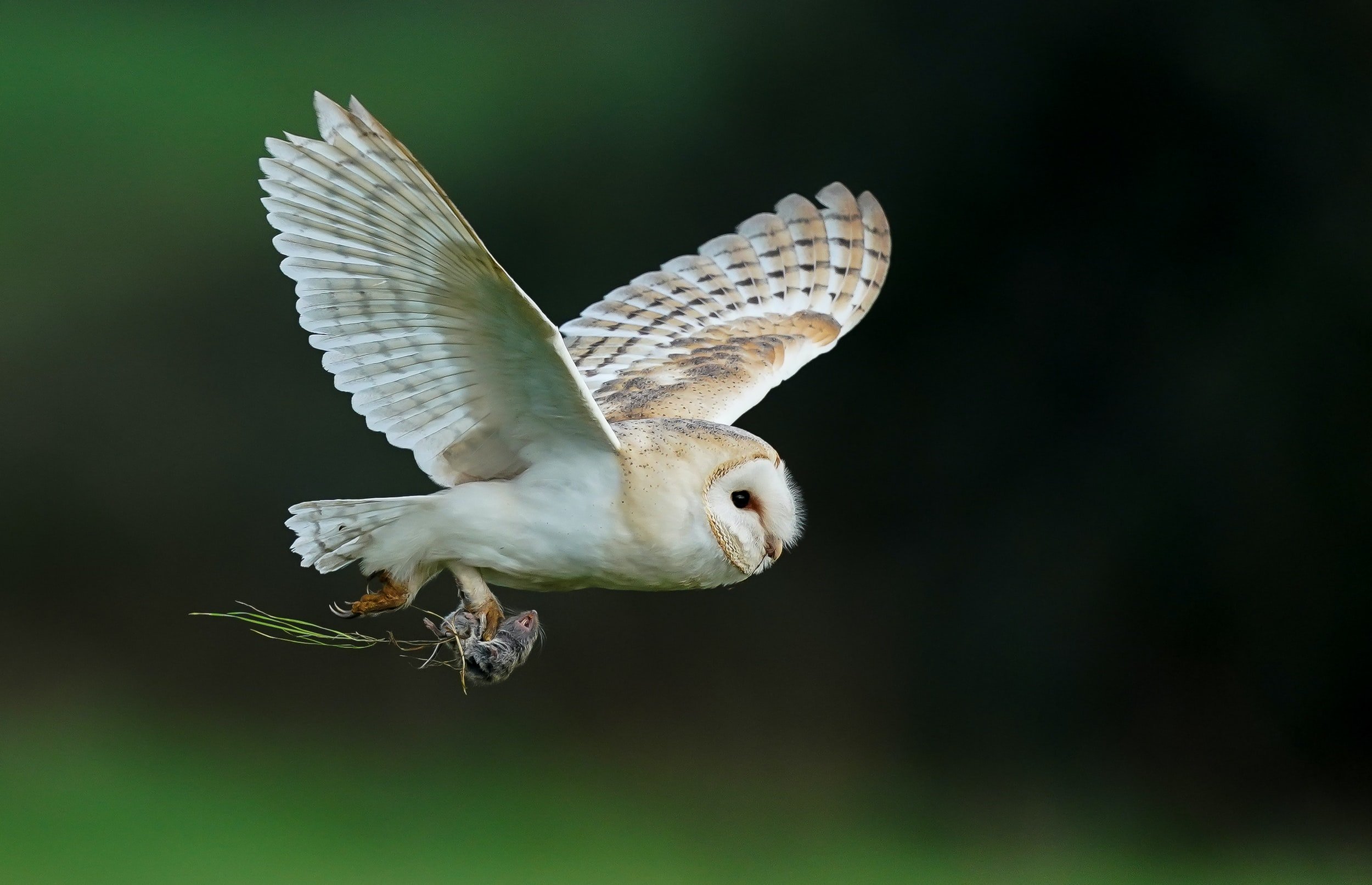
Barn Owl Box Guide
Get a Barn Owl Box
You can purchase a Barn Owl box in our store, or build your own.
Your barn owl box should be hung 12-18 ft. high, preferably in a tree. Hanging on the sides of outbuildings or barns can also be successful. Posts and poles are also suitable if there is canopy nearby, or if the box will get some shade.
Hang the box so it may be easily accessed to be cleaned.
The box should be hung facing any direction but consider where your weather fronts come in and what times of day the box will get the most sun exposure.
Use the three nails to drive into whatever will support the box (poll, wall, or tree) then hang the box on the nails.
Drill a screws into the bottom horizontal panel of the box to further secure the box.
You may add a thin layer of pine needles or other leaves (not oak) to the bottom of the box). Avoid using saw dust, straw or other materials that will accumulate moisture. Most cavities will be naturally bedded with feathers and crushed pellets.
Inhabited boxes should be cleaned once a year, November-January. Sweeping out debris, pellets, feathers etc. is suitable. Soap and water are not necessary.
If you hang your box in a tree, make sure there is a good flight path for the owl to fly in and out. Remove any branches directly in front of the box hole.
The box front should be floating- i.e. not sitting on a limb or near limbs where potential predators would be able to climb in. Raccoons, Bobcats, and Great Horned Owls are predators of Barn Owls.
Be aware that it is possible that Western Screech Owls or other cavity dwelling wildlife might us the box as a nest site.
Diatomaceous earth may be sprinkled along seams of box to deter ants and other insect activity.
How to Know if Your Box is Inhabited
Hunting - hunting usually takes place 1-2 hours after dusk and 1 hour before sunrise so watch/listen for activity during those times.
Does the entrance hole have wear and tear on the bottom portion?
Are there feathers around the box site?
Are there pellets? Pellets are egested by birds of prey and consist of indigestible material like bones, fur and feather.
Be part of ORC’s Barn Owl box data collection program!
If you have an inhabited box, let us know about it by emailing ojairaptorcenter@gmail.com.
BARN OWL NATURAL HISTORY INFORMATION
Mated pairs will mate for life unless one of the mates passes away or disappears. Barn Owls reach maturity at one year.
Prey- 74-100% small mammals/rodents. Rats, mice, voles, and gophers are popular prey items.
Breeding season- Barn Owls have one of the longest breeding seasons of North American raptors- ranging from February to November with the majority of nesting happening between February and June. Barn Owls producing more than 1 brood per year in California is not uncommon.
Number of eggs- avg. 5-7
Incubation period- 29-34 days
Parental feeding habits- Male parent will hunt and deliver food but only female feeds the young. Once the nestlings are able to eat whole foods, female parent will also return to hunting.
Fledging- Barn Owl fledglings leave the nest around 50-55 days but will return to nest/box site for several weeks and continue to roost in the area for up to 8 weeks.
Threats to Barn Owls - pesticides, rodenticides, impacts with vehicles, habitat loss.


